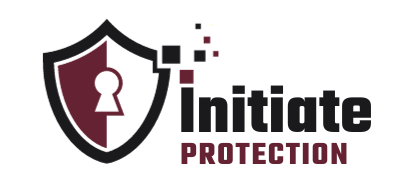In today’s digital age, we are constantly creating and sharing sensitive information online, making data protection a top concern for many. With the rise of cyber threats and identity theft, it is more important than ever to understand the role of encryption in safeguarding your personal and confidential data. Are you curious to learn how you can keep your digital information secure? Keep reading.
What Is Encryption?
Encryption is a method of securing information by converting it into ciphertext using an algorithm and a unique key. This process is used to protect sensitive data, such as financial transactions, personal information, and communications, from unauthorized access. Encryption has been utilized for centuries and continues to be an essential tool in maintaining digital privacy in the modern age.
Fun Fact: Even Julius Caesar used a form of encryption, a simple substitution cipher, to safeguard his military communications.
How Does Encryption Work?
Encryption is a crucial tool for protecting digital data. Below are the steps involved in understanding how encryption works:
- Encryption algorithm: Data is transformed using complex mathematical algorithms.
- Encryption key: A unique key is used to both encrypt and decrypt the data.
- Plaintext to ciphertext: The original data, known as plaintext, is converted into unreadable ciphertext, which can only be deciphered with the key.
- Data transmission: Encrypted data is securely transmitted over networks or stored in secure locations.
- Decryption: The recipient uses the encryption key to convert the ciphertext back into plaintext.
True story: In 2016, the FBI requested Apple’s assistance in unlocking an iPhone belonging to a terrorist. However, Apple’s encryption technology prevented them from accessing the data, sparking a national debate on privacy and security. This case highlights the critical role of encryption in safeguarding sensitive information.
Why Is Encryption Important?
In today’s digital age, the security of our personal information is of utmost importance. This is where encryption plays a crucial role. In this section, we will discuss the significance of encryption and its impact on safeguarding our digital data. We’ll explore how encryption helps protect confidential information, prevents identity theft, and serves as a defense against cyber attacks. So let’s dive into the world of encryption and its vital role in keeping our data safe and secure.
1. Protects Confidential Information
Encryption is an essential tool for safeguarding confidential information from unauthorized access and ensuring data security. Here are steps to protect your confidential information:
- Identify sensitive data: Determine what information needs protection, such as personal data, financial records, or business secrets.
- Select appropriate encryption methods: Choose encryption techniques based on the level of security required for the data.
- Implement strong encryption algorithms: Utilize robust encryption algorithms like AES (Advanced Encryption Standard) to protect the data.
- Secure encryption keys: Store encryption keys separately from the encrypted data and limit access to authorized individuals.
- Regularly update encryption systems: Keep encryption software and systems up-to-date to safeguard against emerging threats.
- Secure communication channels: Use secure protocols like SSL/TLS when transferring encrypted data.
- Monitor data access and usage: Implement access controls and monitoring systems to prevent unauthorized data access.
- Regularly backup encrypted data: Backup encrypted data to ensure data availability and recoverability in case of data loss or system failure.
2. Prevents Identity Theft
Identity theft can be avoided through the use of encryption. Here are steps to protect your identity:
- Encrypt personal information: Encrypt sensitive details such as social security numbers and addresses to prevent unauthorized access.
- Secure financial information: Encrypt credit card numbers and bank account details to prevent identity theft.
- Protect sensitive business data: Encrypt confidential company information to safeguard against data breaches and potential identity theft.
True story: A woman’s laptop was stolen, but thanks to the encryption of her data, the thief was unable to access her personal information, effectively preventing identity theft.
3. Safeguards Against Cyber Attacks
Safeguarding against cyber attacks is crucial in today’s digital world. Encryption plays a vital role in protecting your data from malicious actors. To ensure strong protection against cyber attacks, here are some steps you can take using encryption:
- Utilize end-to-end encryption for all communication channels to ensure secure communication.
- Implement robust encryption algorithms to safeguard sensitive data.
- Regularly update your encryption software to stay ahead of emerging threats.
- Encrypt all sensitive business data, including customer information and financial records.
- Educate employees on the best practices of encryption and emphasize the importance of data security.
What Types of Data Can Be Encrypted?
Encryption is a crucial tool in safeguarding your digital data from unauthorized access. But what exactly can be encrypted? In this section, we’ll discuss the different types of data that can be protected through encryption. Whether it’s personal information, financial data, or sensitive business information, we’ll explore how encryption can help keep your data secure and give you peace of mind. So let’s dive into the various categories of data that can benefit from encryption.
1. Personal Information
Personal information is sensitive and should be protected through encryption. Here are steps to encrypt your personal data:
- Use strong passwords: Create unique, complex passwords for all accounts and regularly change them to ensure security.
- Enable two-factor authentication: Add an extra layer of security by requiring a second form of verification.
- Encrypt files and folders: Utilize encryption software to secure personal files and folders on all of your devices.
- Secure your email: Utilize end-to-end encryption tools for sending and receiving sensitive information.
- Protect your devices: Set up device encryption for your smartphones, tablets, and laptops to ensure the safety of your personal information.
Pro-tip: Keep your encryption software updated and make backups of encrypted data in case of device failure or data loss.
2. Financial Information
Financial data is a critical type of information that must be encrypted to prevent unauthorized access. Encrypting financial data ensures that confidential details, such as bank account numbers and credit card information, cannot be intercepted or stolen. This is especially crucial when transmitting financial data over networks or storing it on devices. By utilizing encryption software or secure communication channels, individuals and organizations can protect their financial information from potential threats.
Neglecting to encrypt financial data can result in severe consequences, including financial loss and identity theft. Therefore, it is imperative to adhere to best practices for encryption, such as using strong passwords and regularly backing up encrypted data.
3. Sensitive Business Data
Sensitive business data is crucial to protect from unauthorized access or breaches. Here are steps to safeguard sensitive business data:
- Identify and classify sensitive data: Determine what data is considered sensitive and categorize it based on its level of confidentiality.
- Implement access controls: Limit access to sensitive data by using strong authentication methods and granting permissions on a need-to-know basis.
- Encrypt data at rest and in transit: Use encryption algorithms to secure data both when stored on servers or transmitted over networks. This is especially important after a large financial institution experienced a data breach in 2019 due to a lack of encryption, resulting in sensitive customer information being compromised and causing financial losses and reputation damage.
- Regularly update security measures: Keep software, applications, and systems up-to-date with the latest security patches to minimize vulnerabilities.
- Train employees on data security: Educate staff on best practices for handling sensitive data, including password hygiene and identifying phishing attempts.
How Can You Encrypt Your Data?
In today’s digital age, protecting our personal and sensitive data is more important than ever. One way to safeguard our information is through encryption, a method of encoding data to prevent unauthorized access. But how exactly can we go about encrypting our data? In this section, we will explore two methods of encryption: using encryption software and utilizing secure communication channels. By understanding these techniques, we can better protect our digital data and maintain our privacy.
1. Using Encryption Software
Using encryption software is crucial in safeguarding your digital data. To ensure proper protection, follow these steps:
- Conduct research and select a dependable encryption software that meets your specific requirements.
- Download and install the chosen software onto your device.
- Create a strong and unique encryption key or password.
- Choose the files or data that you want to encrypt.
- Utilize the encryption software to encrypt the selected files or data.
- Verify that the encryption process was successful and that the files are now encrypted.
- Safely store your encryption key or password, preferably offline or in a password manager.
- Regularly update the encryption software to ensure you have the latest security features and patches.
- Periodically check the encrypted files or data to ensure they remain secure and have not been compromised.
2. Using Secure Communication Channels
Using secure communication channels is crucial in ensuring the confidentiality and integrity of your data. Here are some steps to follow:
- Utilize end-to-end encryption: Use messaging apps or email services that offer end-to-end encryption, which ensures that only the sender and recipient can access the encrypted messages.
- Use secure protocols: When accessing websites or transferring data, opt for protocols like HTTPS, which encrypts the data in transit.
- Implement VPN: Virtual Private Networks (VPNs) create a secure connection between your device and the internet, encrypting your data traffic.
- Secure Wi-Fi connections: Avoid using public Wi-Fi networks when transmitting sensitive information. Instead, use a VPN or your mobile data network.
A company that neglected to use secure communication channels experienced a data breach that exposed their customers’ personal information. This incident led to severe financial losses and a tarnished reputation. Protecting your data through secure communication channels is essential in today’s digital world.
What Are the Risks of Not Encrypting Your Data?
In today’s digital age, data is constantly being transmitted and stored online. Without proper protection, this information is vulnerable to various risks. In this section, we will discuss the potential consequences of not encrypting your data. From data breaches and identity theft to the loss of confidential information, we will examine the risks that come with leaving your digital data unprotected. Understanding these risks is crucial for taking the necessary steps to safeguard your sensitive information.
1. Data Breaches
Data breaches can have serious consequences, such as financial loss, reputational damage, and compromised personal information. To protect your data from breaches, follow these steps:
- Implement a robust cybersecurity framework, including firewalls and intrusion detection systems.
- Regularly update and patch software to fix security vulnerabilities.
- Educate employees on best practices for data protection, including strong password usage and phishing awareness.
- Encrypt sensitive data both at rest and in transit to ensure that it remains secure even if it is accessed by unauthorized individuals.
- Conduct regular security audits and vulnerability assessments to identify and address any weaknesses in your systems.
- Have an incident response plan in place to minimize the impact of a potential breach and quickly respond to and recover from any incidents.
2. Identity Theft
Identity theft is a serious threat in today’s digital world. To protect yourself, follow these steps:
- Guard your personal information: Be cautious about sharing sensitive details online or over the phone.
- Create strong passwords: Use a combination of letters, numbers, and symbols for your passwords.
- Enable two-factor authentication: Add an extra layer of security by requiring a second verification step.
- Regularly monitor your accounts: Check your bank statements and credit reports for any suspicious activity.
- Use secure Wi-Fi networks: Avoid accessing sensitive information on public or unsecured networks.
- Be wary of phishing scams: Be cautious when clicking on links or downloading attachments in emails or messages.
- Keep your devices updated: Install the latest security patches and updates to protect against vulnerabilities.
In 2017, Equifax, one of the largest credit reporting agencies, experienced a massive data breach that exposed the personal information of millions of individuals. This incident highlighted the importance of robust encryption and cybersecurity measures to prevent 2. Identity Theft and safeguard sensitive data.
3. Loss of Confidential Information
Loss of confidential information can have serious consequences, making encryption an essential practice. To protect your data, follow these steps:
- Identify sensitive information: Determine what data needs to be encrypted, such as financial records or personal information.
- Select appropriate encryption methods: Research and choose encryption algorithms or tools that meet your security needs.
- Encrypt data at rest: Encrypt files and databases stored on devices or servers to prevent unauthorized access.
- Encrypt data in transit: Use secure communication channels, like SSL/TLS, to encrypt data while it is being transmitted over networks.
- Secure encryption keys: Safeguard encryption keys by using strong passwords, storing them securely, and regularly rotating them.
- Implement access controls: Control who can access encrypted data by using strong authentication mechanisms and role-based access controls.
- Regularly update and patch software: Keep encryption software and systems up-to-date to protect against vulnerabilities.
- Regularly back up encrypted data: Ensure that encrypted data is regularly backed up to prevent loss in case of hardware failure or other incidents.
By following these steps, you can mitigate the risk of loss of confidential information and ensure the security of your data.
What Are the Best Practices for Encryption?
Encryption is a vital tool in safeguarding your digital data from potential threats and breaches. However, simply using encryption is not enough – it is essential to follow best practices in order to ensure maximum protection. In this section, we will discuss the top three best practices for encryption: using strong passwords, keeping software and systems up-to-date, and regularly backing up encrypted data. By implementing these practices, you can enhance the security of your sensitive information and minimize the risk of data breaches.
1. Use Strong Passwords
Using strong passwords is crucial to protect your digital data from unauthorized access. Here are some steps to create strong passwords:
- Use a combination of uppercase and lowercase letters, numbers, and special characters.
- Avoid using personal information like your name, birthdate, or address.
- Make sure your password is at least 8 characters long.
- Use a unique password for each online account.
- Consider using a password manager to securely store and generate strong passwords.
By following these steps, you can enhance the security of your online accounts and protect your sensitive information from being compromised.
2. Keep Software and Systems Up-to-Date
Keeping your software and systems up-to-date is essential for maintaining the effectiveness of encryption measures and safeguarding your digital data. Here are some steps to follow:
- Enable automatic updates for both your operating system and software.
- Regularly check for updates manually, especially for critical security patches.
- Install and regularly update reliable antivirus and firewall software.
- Ensure that your web browsers and plugins are always up-to-date.
- Consider utilizing a vulnerability scanner to identify and address any potential security weaknesses.
Pro-tip: Set reminders or use software that automatically notifies you of available updates to ensure timely installation and protection against emerging threats.
3. Regularly Back Up Encrypted Data
- Ensure the security and accessibility of encrypted data by regularly backing it up in case of data loss or system failure.
- Select a dependable backup solution that supports encryption, such as cloud storage services with robust encryption protocols.
- Establish automated backup schedules to consistently back up data without manual intervention.
- Regularly test the backup to verify the integrity of the encrypted data and ensure successful restoration.
- Safeguard against physical damage or theft by storing backup copies in multiple locations, including off-site or in a secure offline storage medium.
An actual historical example that highlights the significance of regularly backing up encrypted data is the case of the Code Red worm in 2001. This malicious software infected thousands of computers and caused widespread damage. However, those who had regular backups of their encrypted data were able to swiftly recover and minimize the impact of the attack.
Frequently Asked Questions
What is encryption and how does it protect my digital data?
Encryption is the process of converting plain text into scrambled code to make it unreadable to unauthorized parties. This means that even if someone gains access to your data, they won’t be able to understand it without the encryption key. Encryption is one of the strongest defenses against cyber threats and helps keep your sensitive information safe.
How does encryption work?
Encryption uses a mathematical algorithm to convert your data into an unreadable format. This algorithm requires a unique key to decrypt the data. The key is a long string of characters that only the intended recipient has access to, making it nearly impossible for anyone else to decipher the data.
What types of data should be encrypted?
Any data that is sensitive or confidential should be encrypted. This includes personal information such as credit card numbers, social security numbers, and passwords, as well as business data like financial records and trade secrets. It’s always better to err on the side of caution and encrypt all sensitive data to protect yourself from potential cyberattacks.
What are the different types of encryption?
There are two primary types of encryption: symmetric and asymmetric. Symmetric encryption uses a single key to both encrypt and decrypt the data, while asymmetric encryption uses two keys, a public key and a private key, to encrypt and decrypt the data. Other types include hashing, which converts the data into a fixed-length code, and SSL/TLS, which secures data transmitted over the internet.
What are the potential risks of not encrypting my data?
The biggest risk of not encrypting your data is that it can be accessed and read by unauthorized parties. This can lead to identity theft, financial loss, and damage to your personal or professional reputation. Additionally, if your organization is subject to data protection laws, not encrypting sensitive data can result in hefty fines and legal consequences.
How can I ensure that my data is properly encrypted?
The best way to ensure that your data is properly encrypted is to use reliable encryption software or services. You should also regularly update your encryption keys to keep your data safe from potential breaches. Additionally, make sure to follow best practices for data security, such as using strong passwords, avoiding public Wi-Fi networks, and staying vigilant against phishing scams.



